Dynamic Loft Vs Launch Angle In Golf – Everything You Need To Know
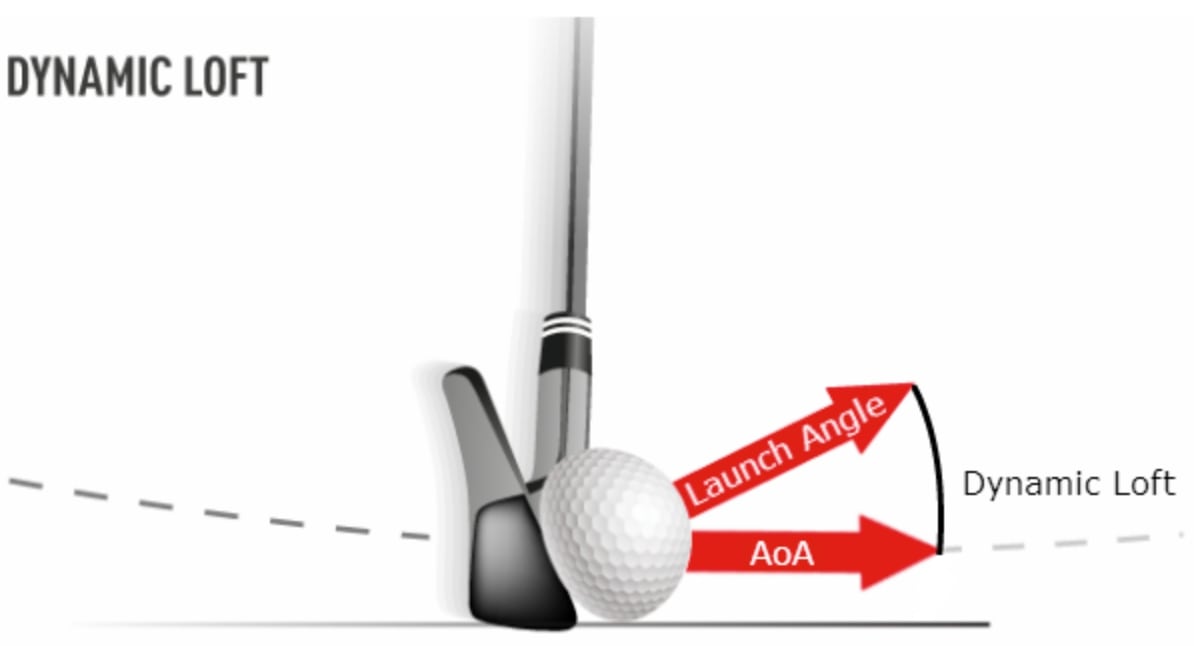
Dynamic loft vs launch angle in golf?
What are these statistics, and why do they matter to your game? In this post, I reveal the difference between dynamic loft vs launch and detail how optimizing these numbers improves your ball flight, carry distance, and roll.
By the end of this post, you will understand what dynamic loft is and how it correlates to your launch angle. In addition, I detail how your angle of attack is responsible for your spin rate, accuracy and carry, and total distance.
Intro To Both Stats And Why It Is Important To Know The Difference
Dynamic loft and launch angle are data parameters that indicate the loft of your clubface at impact and the angle at which your ball flies off the face.
The higher your launch and loft angle, the shorter your golf ball travels.
A strong lofted club, like a driver, will deliver a lower dynamic loft than a 6-iron. According to Trackman, the average PGA Tour pro has a dynamic loft of 12.8 degrees at impact and generates a 10.9-degree launch angle. The reason for a lower launch angle is a pro’s ability to compress the ball at impact.
Conversely, the Pros produce 20.2 degrees of dynamic loft with a 6-iron but launch 14.1 degrees. Resulting in 4 degrees extra with the mid-iron.
What Is Dynamic Loft
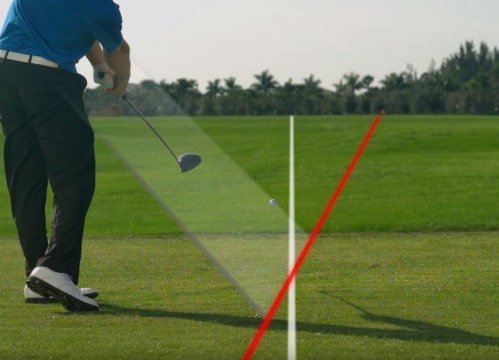
Dynamic loft determines the angle of the clubface at impact in relation to the horizon.
In layman’s terms, it means how open your clubface is when it strikes the golf ball. The flex and torque of your shaft, attack angle, and clubface path affect your dynamic loft.
For example, you will experience a lower dynamic loft when you close the clubface at impact than opening it. Insufficient dynamic loft can produce a shallow launch that struggles to get airborne and costs you carry distance.
On the contrary, an excessively weak dynamic loft can cause a ballooned shot and a loss of forward momentum.
What Is Launch Angle
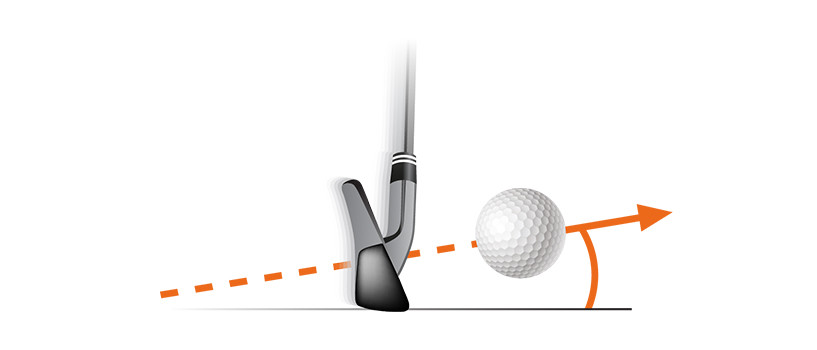
Launch angle refers to the angle at which the ball comes off the clubface relative to the horizon.
The lowest launch angle is typically produced by your driver. PGA tour Pros achieve an average launch angle of 10.9 degrees with a driver, while they reach 14.1 degrees with a 6-iron.
Typically the higher your launch angle is, the shorter the distance of your shot. Referring back to my PGA Tour example, Trackman suggests. The average launch angle for a pitching wedge is 24.2 degrees. Over 13 degrees higher than a driver.
How Does Dynamic Loft Affect Launch Angle
The dynamic loft of your clubface at contact influences the intensity of your launch angle.
A clubface with a high dynamic loft at impact prompts an elevated launch angle. Conversely, a lower dynamic loft promotes increased compression and keeps the ball down for piercing flight.
What Else Does Angle Of Attack Effect

Launch Angle
The angle that you attack and strike the ball impacts your dynamic loft and launch angle. A steep angle of attack prompts you to hit down on the ball with a closed clubface angle and boost compression for enhanced energy transfer.
The result is a lower launch, with optimal ball speed and reduced spin, which delivers greater distance.
A shallow attack angle causes golfers to sweep the ball off the turf with minimal divot, which works fine for some. However, you fail to compress the golf ball sufficiently and likely produce a higher dynamic loft and launch angle.
Spin Rate
A closed clubface takes spin off the ball and boosts compression and energy transfer to accelerate ball speed. This helps you keep the ball low and maximize forward momentum for ample yardage on shots.
Conversely, an open clubface at impact causes increased spin as the clubface gets under the ball and reduces forward roll.
Compression
I mentioned already that your attack angle impacts the compression level you produce at impact. Increased compression accelerates ball speed, lowers spin, and encourages piercing flight to optimize distance and roll.
What About The Loft Of The Club
The loft of each golf club has an impact on the possible negative or positive dynamic loft angles.
For example, you cannot achieve the same dynamic loft with a closed pitching wedge club face and a driver club face.
The lower lofted driver should also produce the lowest dynamic loft and launch angle. If not, there is something wrong with your angle of attack and clubface angle at impact. In this case, I suggest visiting a club fitter to identify the correct angle for your golf swing.
Dynamic Loft Vs Spin Rate
Using the Trackman driver vs 6-iron comparison from earlier, we notice that as dynamic loft increases, so does the spin rate. The average dynamic loft of a driver at contact is 12.8 degrees prompting 2686 rpm of backspin.
Conversely, the standard dynamic loft of a 6-iron on the PGA Tour is 20.2 degrees, which generates 6231 rpm of spin.
The more your clubface is open when striking the golf ball, the more spin you generate. On the contrary, a closed clubface reduces your spin rate. Therefore, a stronger dynamic lofted 6-iron may produce less than 6231 rpm.
However, a weaker-than-usual dynamic lofted golf club will likely create more than 6231 rpm. The more a golf ball spins, the higher it launches and the less it travels.
What is static vs dynamic loft?

Static loft refers to your clubface loft.
For example, a stock driver for moderate speeds has a static loft of 10.5 degrees. In addition, a modern 6-iron carries approximately 31 degrees.
The stronger the static loft of a golf club is, the lower the dynamic loft becomes. LPGA Tour Pros create 15.5 degrees of dynamic loft off the tee using a lower lofted driver. When we analyze their 6-irons, which have 29 to 31 degrees loft, we find an average dynamic loft of 23.6 degrees.
As the static loft of your clubs weakens, the dynamic loft increases to produce a higher launch angle and consistent carry distance.
Does dynamic loft affect ball speed?
Yes, dynamic loft does impact ball speed.
When you operate with a higher dynamic loft, you reduce compression and increase spin, lowering your ball velocity. I generate superior ball speed when catching the ball with a lower dynamic loft angle and boost compression to promote a controlled flight.
Another example of high dynamic loft impacts ball speed lies in our case study on PGA and LPGA Tour averages. The 15.5-degree dynamic loft of LPGA Tour Pros on tee shots results in an average ball speed of 140 mph.
However, when we look at their 6-iron stats, we notice a higher dynamic loft of 23.6 degrees and a ball speed of 109 mph.
Does Launch Angle Affect Distance
Yes, launch angle does affect distance, as an excessively low or high angle relative to your dynamic loft, spin rate, and ball speed can cost you yardage.
When your launch is elevated, it prompts a ballooned shot with increased spin and loses forward momentum and carry distance.
The other end of the stick sees a grasscutter, which launches low and catches the ground soon after lift off. Although it rolls forward additional yards, you lose significant distance.
How Can You Measure Launch Angle & Dynamic Loft?
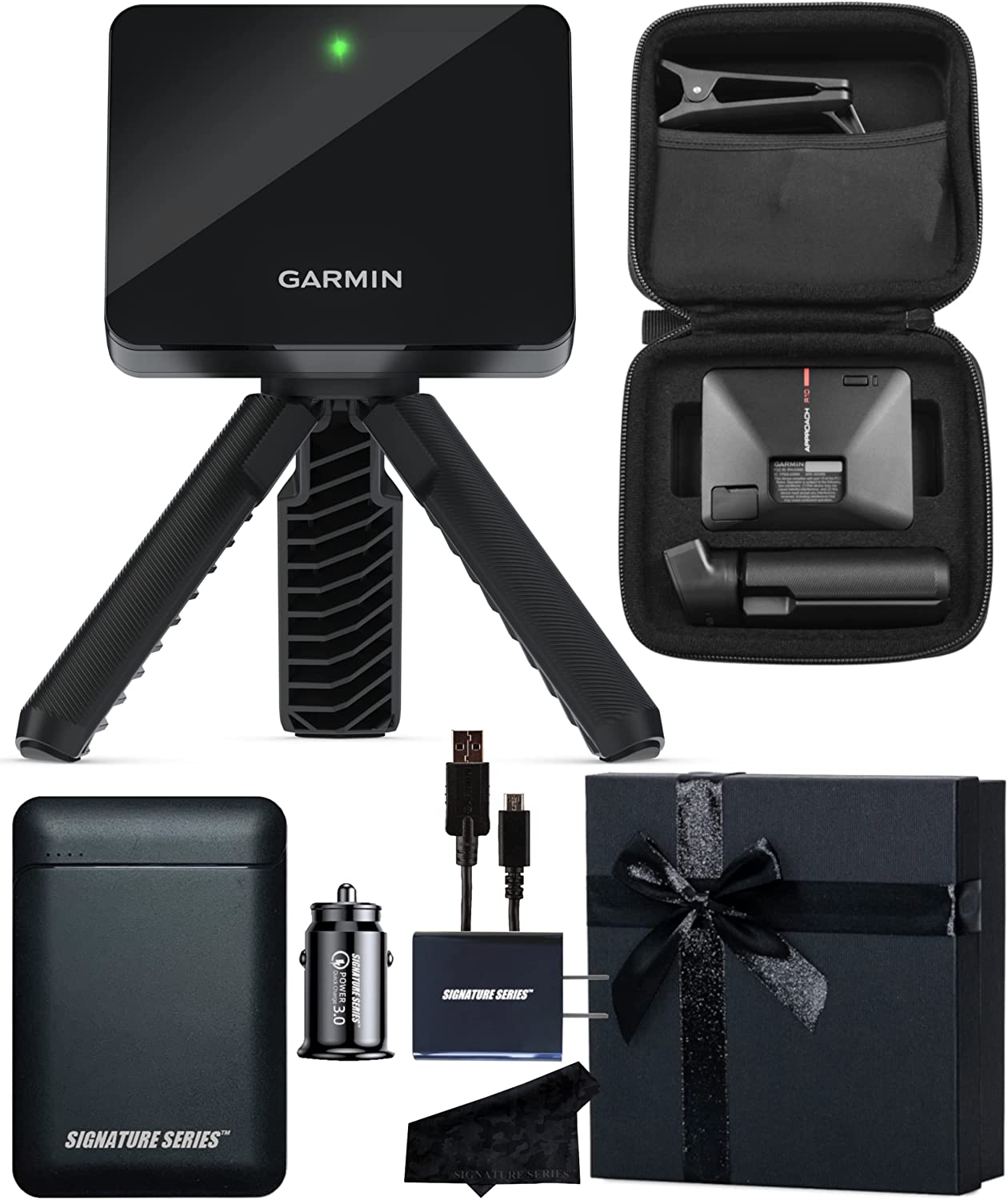
A launch monitor is the best way to assess your launch angle and dynamic loft.
A launch monitor provides detailed insight into your speed, spin, direction, and distance and stands to benefit every golfer.
The market has premium options like the Trackman 4 or GC3, but you can acquire an affordable device like the Garmin Approach R10.
Average Dynamic Lofts On Tour
PGA Tour
The average dynamic loft of a driver on the PGA Tour is 12.8 degrees, while a 6-iron reaches 20.2 degrees.
LPGA Tour
LPGA Tour Pros notch up 15.5 degrees of dynamic loft off the tee and 23.6 degrees with a 6-iron.
Any Dynamic Loft Drills?
Forward Press Drill
I use the forward press drill to help me keep the shaft ahead of the ball at impact to deloft the clubface and produce a lower, controlled launch. The compression it encourages is phenomenal, which boosts energy transfer and imparts rapid speed and low spin on my long iron shots.
When you address the ball, place the clubhead behind it and lean your hands forward slightly until they are ahead of the ball. Work on getting the clubface to this position at impact, and employ it in your shots.
Conclusion
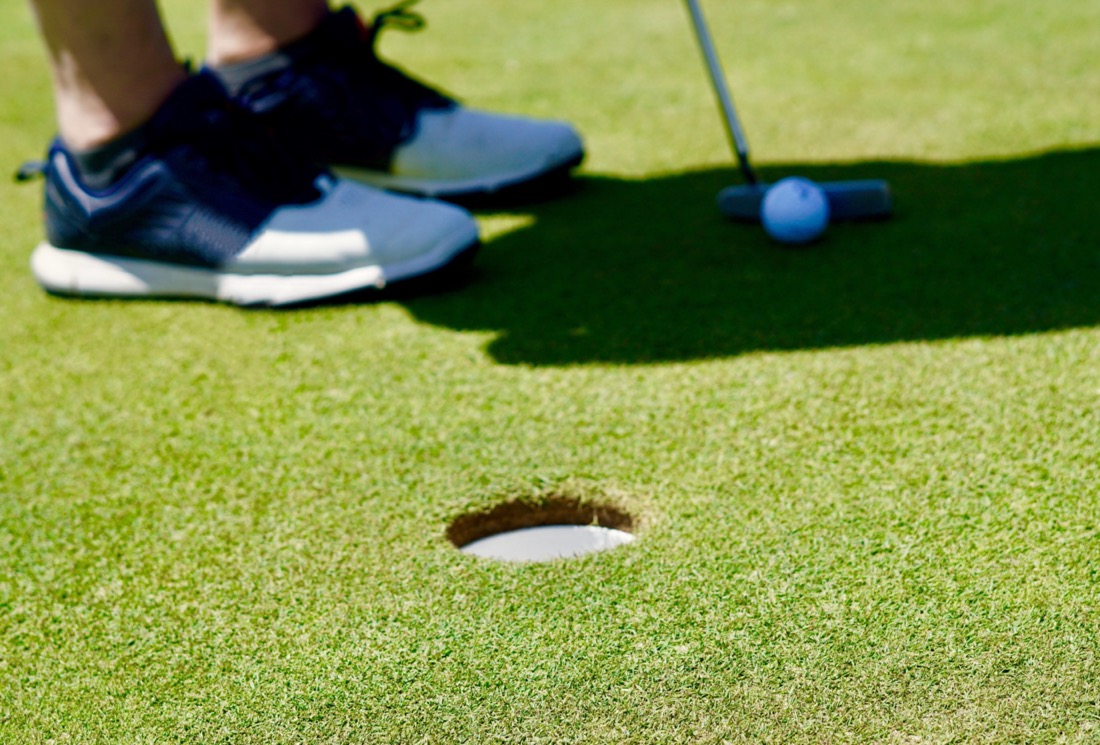
Our review of dynamic loft vs launch angle shows that the two features are linked.
When your dynamic loft is low, it sets you up for a lower launch, rapid ball speed, and optimal distance.
Conversely, a weaker dynamic loft generates a higher launch angle, carrying increased spin and lost forward momentum. As a result, you will lose carry and total distance.



